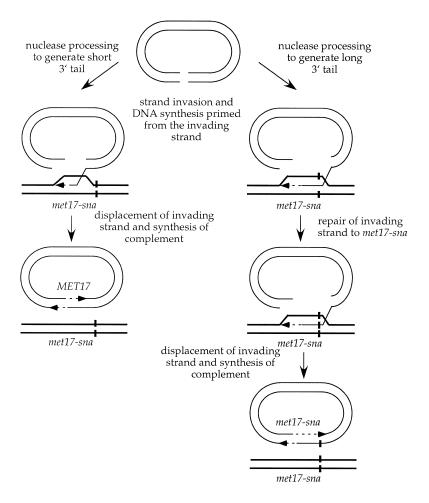Figure 2.
Origin of the Met+ and Met– recombinants. Extensive processing of the ends flanking the plasmid gap generates long 3′ single-stranded tails including the MET17 SnaBI site. Heteroduplexes resulting from strand invasion will contain the mutant and wild-type SnaBI sites. Mismatch repair of the invading strand will result in met17-sna information on the invading strand. Following DNA synthesis from the invading 3′-end, the invading strand is displaced and pairs with the 3′ tail at the other side of the break. DNA synthesis initiated from the other 3′-end, or by coupled lagging strand synthesis during the initial invasion, will duplicate the met17-sna allele. Less extensive processing of the break will result in the MET17 SnaBI site remaining double-stranded and it will not be incorporated into hDNA during strand invasion.

